Army World War II Roselle, IL Flight date: 04/10/24
By David Adams, Honor Flight Chicago Veteran Interview Volunteer
Born 99 years ago this March, Kenneth “Ken” Molnaire grew up in Chicago. Living in Edison Park he attended Ebinger School, graduating in 1939. He attended Schurz High School followed by Maine Township High School from which he graduated on June 4, 1943. While still in school Ken vividly remembers December 7, 1941. He worked as an usher at the Des Plaines Theater that Sunday. While a film was running he went across the street to the drug store. Upon entering he was asked if he had heard about the attack on Pearl Harbor. He hadn’t! Returning to the theater he found that notice of the Japanese sneak attack had spread. The projectionist had stopped the film, abandoned his job, and left to enlist. Similar circumstances occurred throughout the nation at that time.
Ken received his draft notice just days after graduation from Maine. He began his enlistment that June at Camp Grant, Rockford, IL. Basic and specialty training followed at Camp McCoy, WI and Camp Ellis near downstate Macomb, IL. Camp Ellis provided training for Army engineers and other specialties such as medics. According to regimental history, the 1301st Engineer General Service Regiment had been activated in June 1943 at Camp Ellis. Such a regiment performed work requiring a high percentage of skilled labor, Ken recalls, such as building bridges (and blowing them up depending on whose army intended to use them), highways, railroads, hospitals and eventually structures to house armor such as Patton’s tanks.
He also learned how to remove German mines and detonate them when required. Among the mines with which he became familiar were shoe mines that Ken remembers would “blow a foot off”. He also learned to clear Teller Mines used by the Germans against armor and the S-mine, or “Bouncing Betty” mine, designed to kill or maim troops. Ken cleared all of these mines during Patton’s advance into Germany. He also became an expert with the M-1 rifle, but says he never had to fire it in anger. Ken was assigned to, rather than volunteered for, the 1301st. Within the regiment he joined Company A based solely on his height. Selection by height he explains is due to the cooperative manual labor required to conduct the engineers’ mission. At 6 feet 2 inches tall he did indeed qualify for Company A although he admits he was among the shortest.
After training to fulfill the tasks of an Army engineer, he and the regiment relocated to Camp Myles Standish, Taunton, MA near Boston. From there the regiment embarked for the European Theater of Operation on the troop ship Edmond B. Alexander (APL-1). It sailed on March 24, 1944, arriving in England 12 days later on April 5. The ship joined a convoy headed across the North Atlantic which Ken recalls was infested with German submarines. None attacked his convoy, much to his relief.
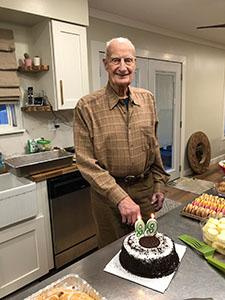
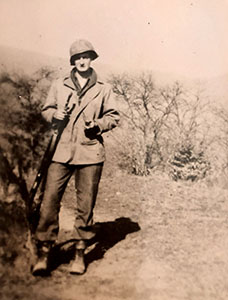
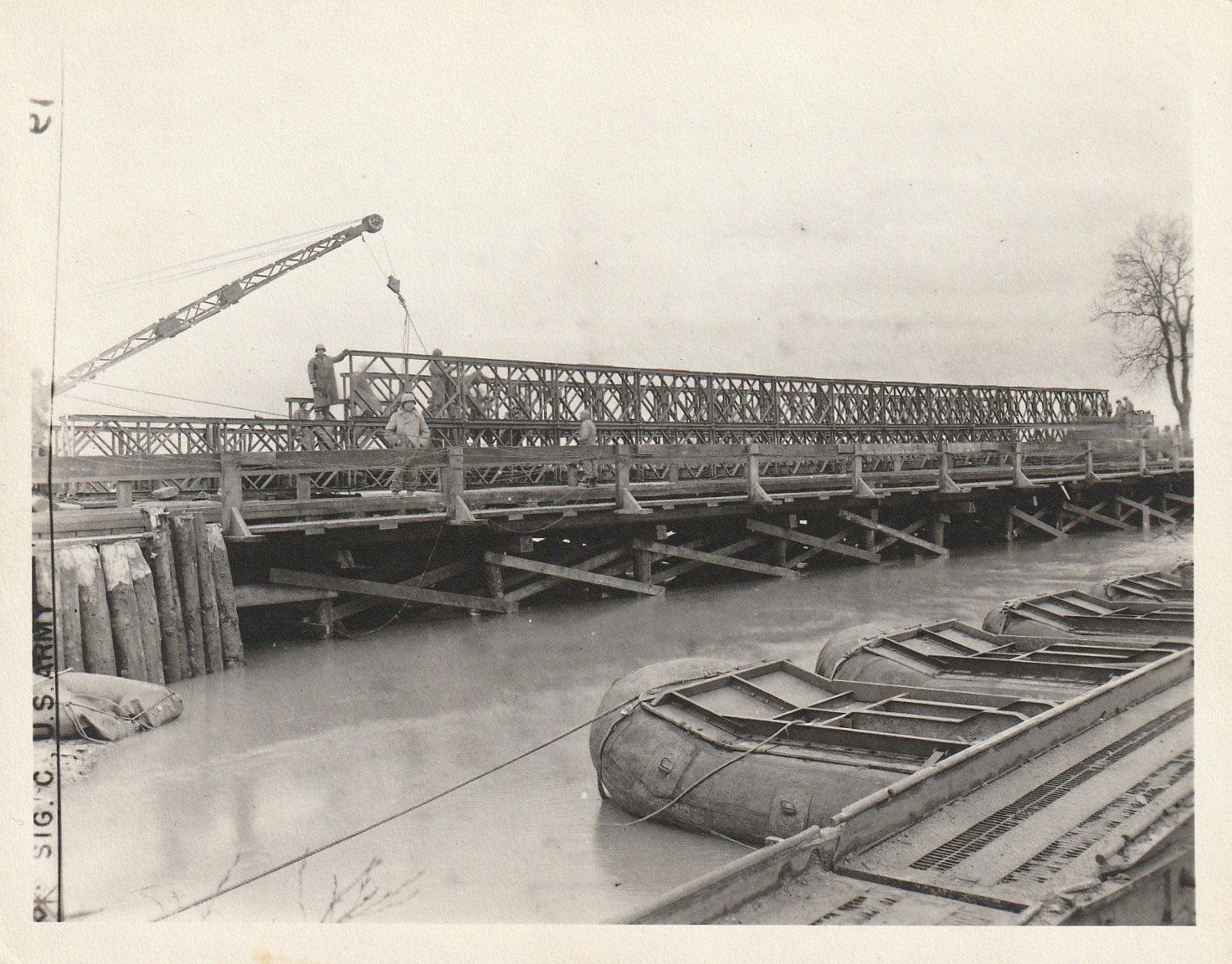
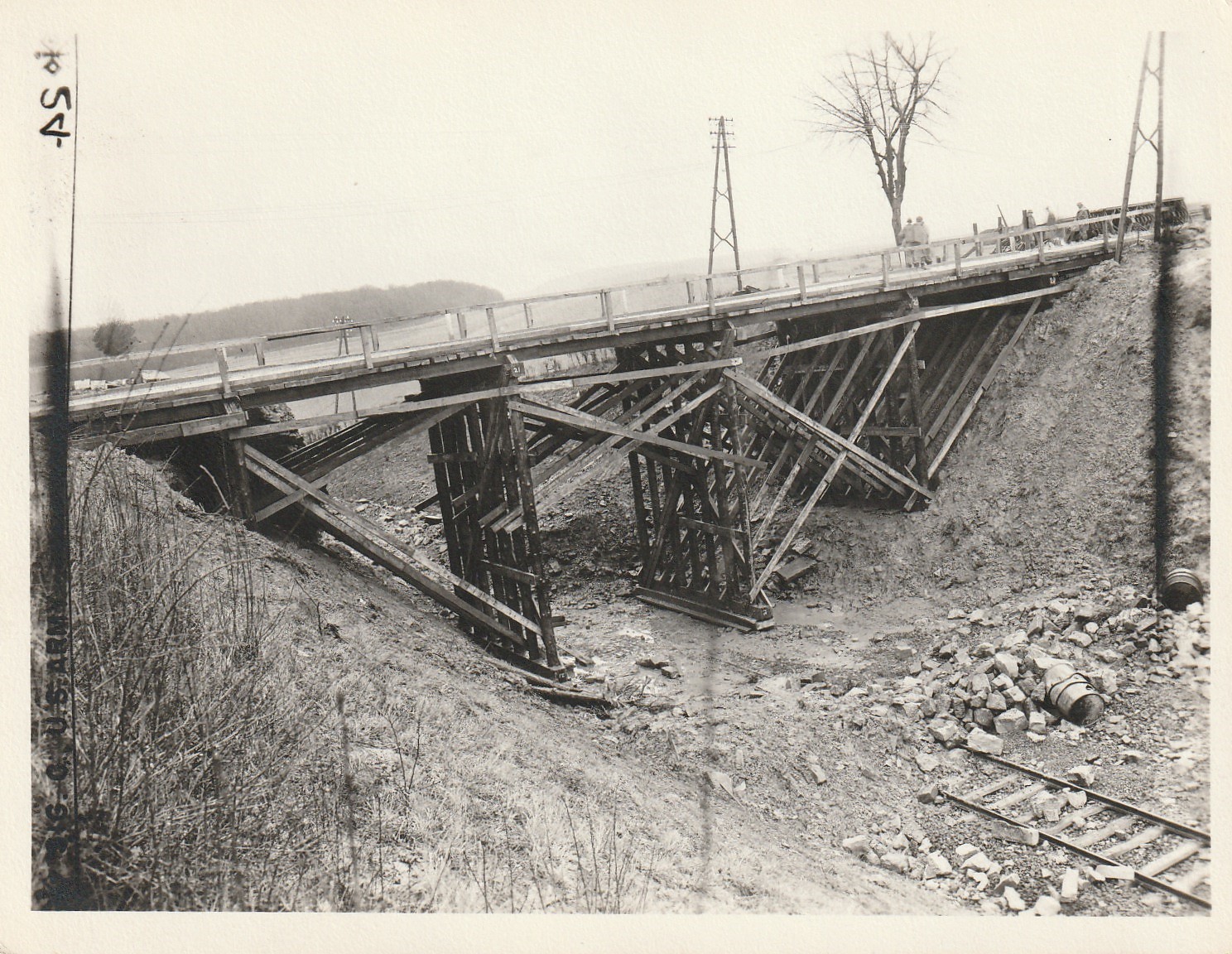
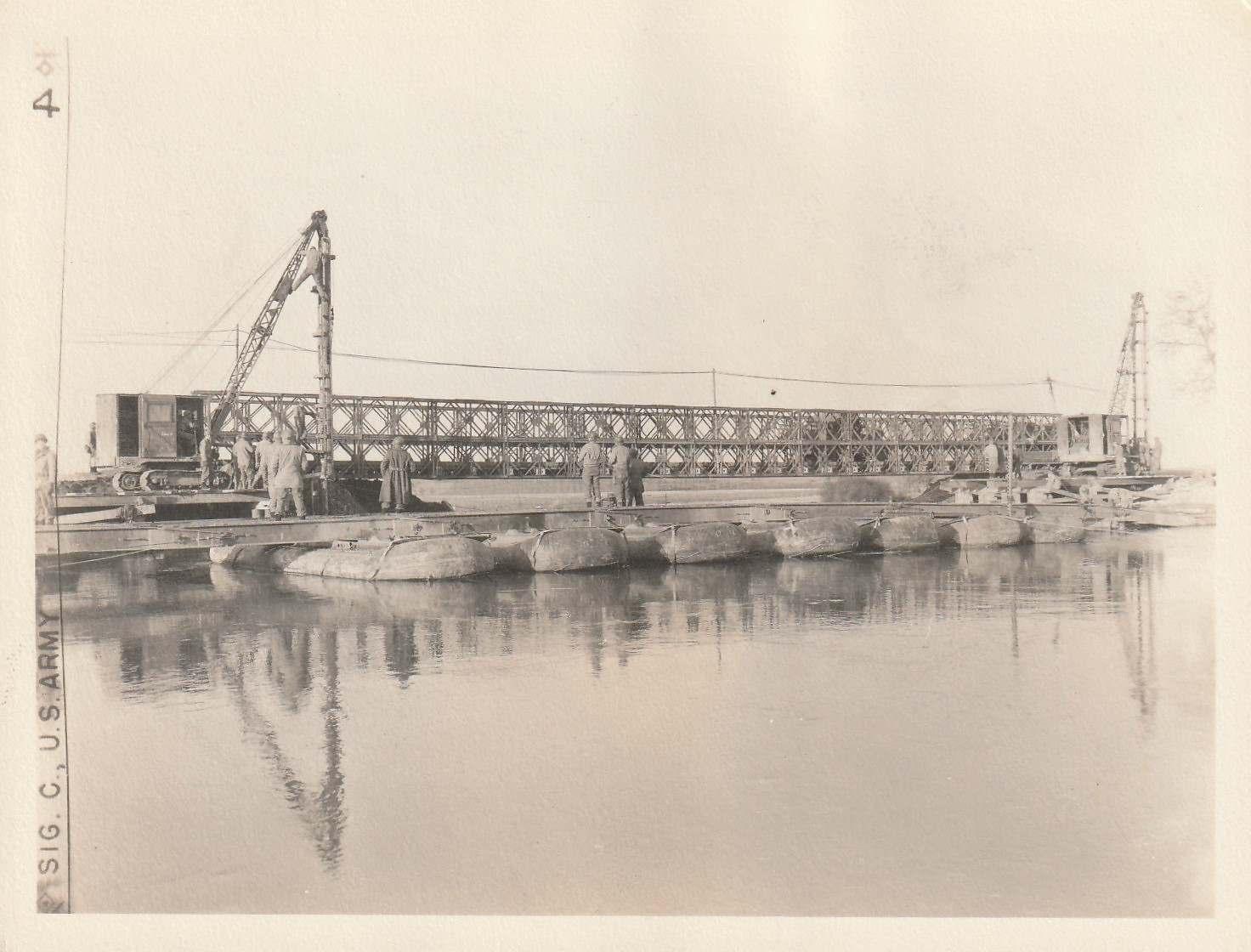
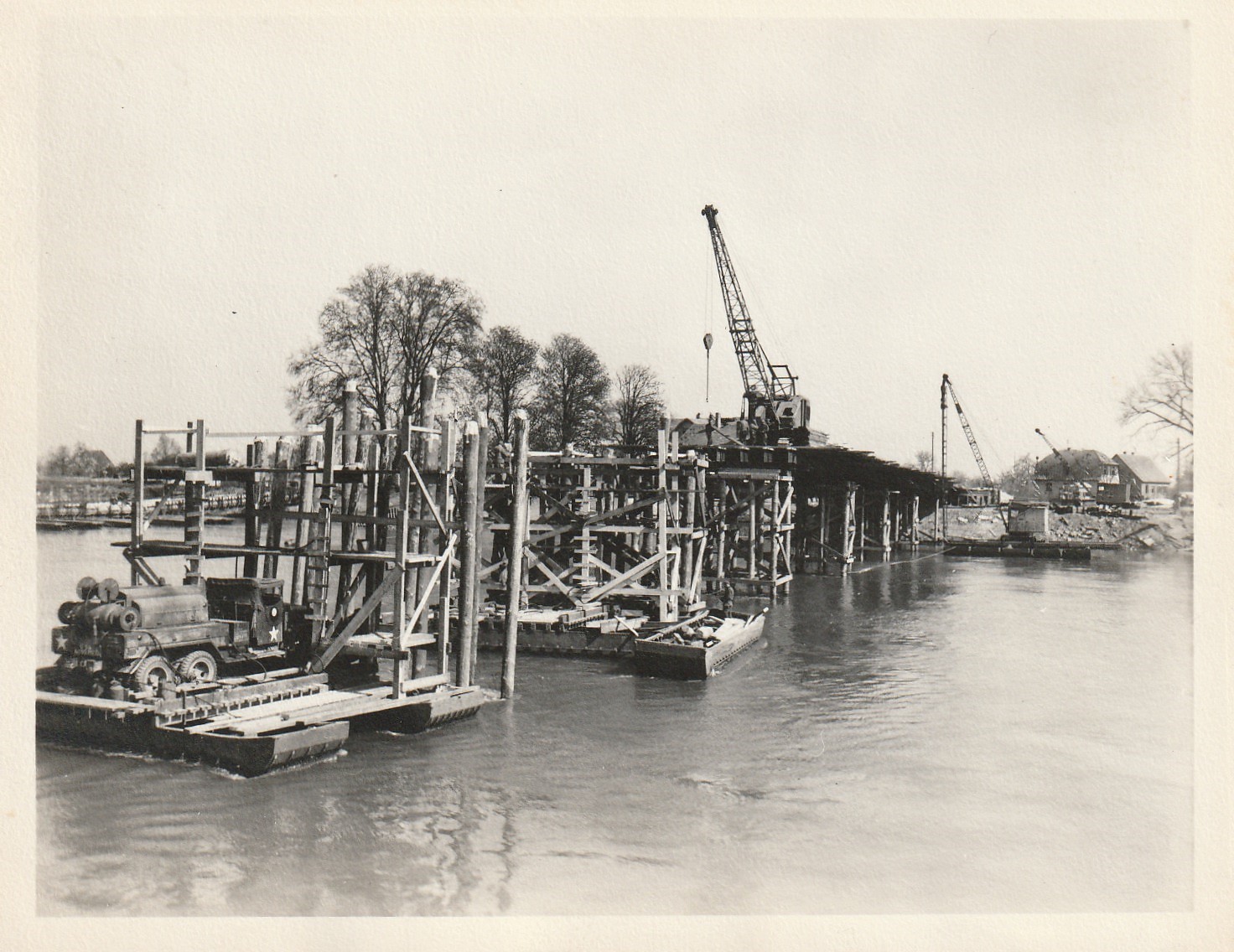
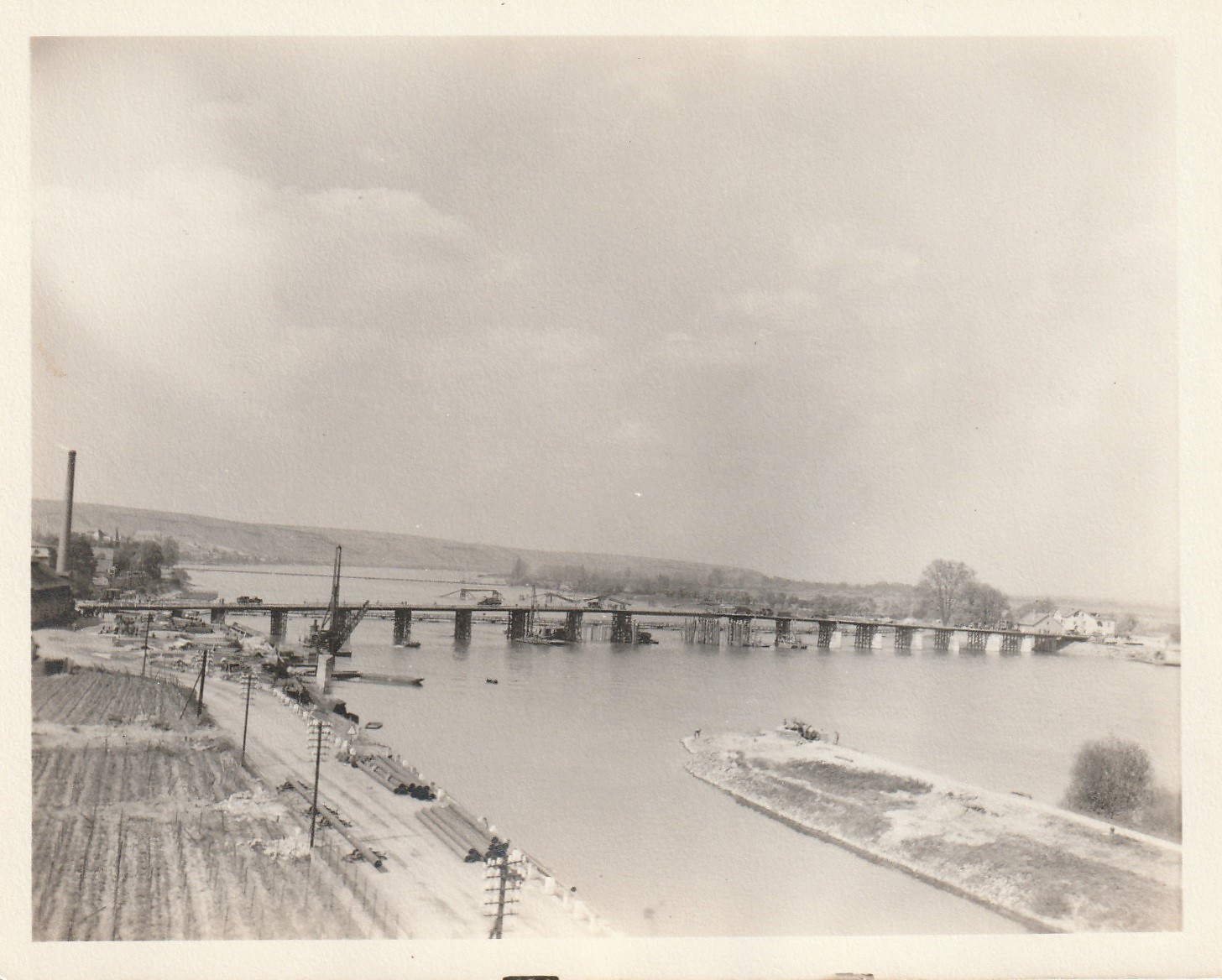
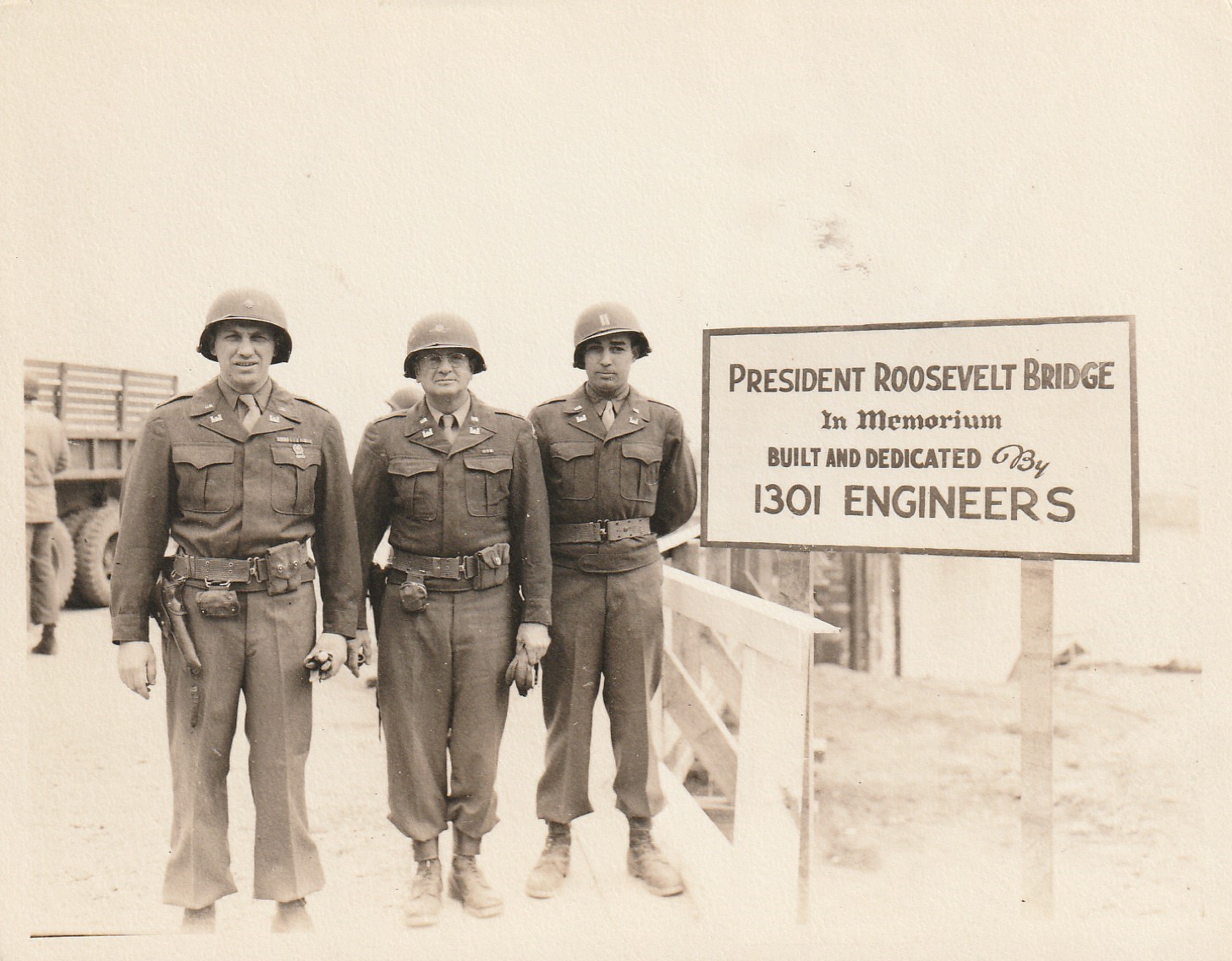
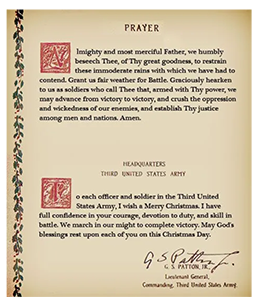
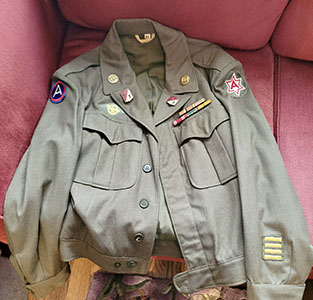

Four more months of training and construction activities followed in Southwest England. Much of his regiment’s preparation for and support of Operation Overlord and subsequent Allied combat operations occurred in the county of Wiltshire, located on the Salisbury Plain. Ken kept busy building warehouses for tanks which were soon to “belong” to General George S. Patton, known affectionately as “Blood and Guts”. His regiment was billeted in the vicinity of Stonehenge which he saw only from the road. Ken managed a one-day pass to visit London. Boarding British Rail for a roundtrip to London he and several buddies took in as many sights as possible. He was quite impressed with Westminster Abbey. His regiment departed England, crossed the Channel, and arrived on Utah Beach August 5. Now on the mainland, the 1301st regiment became an essential component of Patton’s Third Army.
The 1301st marched across France for the rest of 1944 building bridges when and where necessary and clearing mines from the roads and fields. While Ken did not have the pleasure of meeting General Patton personally, he recalls that near Le Mans, France where the 1301st was building a Bailey Bridge across a waterway, Patton drove up in his jeep. He demanded to know “What’s holding up traffic?” When he realized that Ken and the other engineers had to move one Bailey Bridge aside and erect a second one to support the traffic, Patton drove off. A Bailey Bridge could be and was assembled and installed in 12 hours, or less according to Ken. Patton had no reason to be concerned.
In December 1944 just before the German army launched the Battle of the Bulge, he recalls that the 1301st was instructed to place mines on bridges between the Third Army forces and the German army, mines to be detonated if the attackers attempted to cross. Ken says gratefully there was no need to carry out this plan. The mines were removed later by the engineers. The early winter weather in northern France was lousy. He recalls scenes from the 1970 movie Patton. Actor George C. Scott as Patton requested a weather prayer from the Chief Chaplain. He wrote a prayer for good weather in advance of the upcoming battle. Patton approved and all in the Third Army were provided a copy. History records that 250,000 copies were printed. Ken remembers receiving his copy of the “weather prayer” card on the reverse of which is Patton’s Christmas greeting. Ken treasures his!
By the time the Battle of the Bulge began on December 16 the 1301st had advanced to Thionville, France, just south of Luxembourg City. With the Germans defeat on January 25, 1945, the 1301st supported Patton’s further rapid advance by erecting bridges across such important rivers such as the Saar and Moselle. The Third Army was the first Allied army to cross the Rhine. Ken’s regiment constructed a Treadway, floating pontoon bridge at Oppenheim. The assault into the heart of southern Germany was a success. The Germans never made any meaningful attacks on Ken’s regiment. He does remember, however, the feared German ‘88s firing in his direction although without effect. May 8, 1945, found Ken and his regiment at the Danube River.
From there Ken and his regiment waited for orders to the Pacific Theater of Operation. Eventually they boarded a troop train for the four-day trip to Marseilles, France from which they would embark for the Pacific. Ken remembers vividly traveling in boxcars which he recalls were designed for “40 men or 8 horses”. One time he and three others were sitting in the doorway of their car when they saw something extraordinary in the boxcar just ahead. One of his mates had been throwing candy to children who were positioned along the tracks when he fell out. Not hurt, he stood up and when Ken’s car reached him, he was pulled in.
Ken remained in Marseilles until the troop ship SS Sea Quail arrived to transport the 1301st to fight the rest of the war. On board Ken was fortunate to snare a top bunk within the stack of five. There was a light above his bunk for reading for whomever, besides himself, inhabited it from time-to-time. He remembers having to take special care ascending to and descending from his bunk so as to not step on any of the men in lower ones.
The SS Sea Quail left Marseilles in late July, sailed through the Strait of Gibraltar out into the Atlantic. Ken reports that after fifty-four days at sea the ship docked in Manila. However the event he remembers the most happened a couple of days after transiting the Panama Canal. He and the troops cheered to learn that the War in the Pacific ended with the Japanese surrender on August 14. The ship’s newspaper, the Spanner, put out a special edition that day. Regardless of the end of hostilities, the ship sailed on. Once on shore his regiment built its own housing he describes as “a tent city in a swamp”.
Ken returned to the States in December 1945 and reported to Camp Grant where his military adventure had begun. He was honorably discharged on January 6, 1946 with the rank of PFC after two and a half years of wartime service. His family and friends welcomed him home with a huge party.
As a result of Ken’s exploits he earned these medals: European-African Middle Eastern Campaign with four battle stars (recognizing his service during Patton’s Third Army battles from Normandy to the end of the European War), Asiatic Pacific Campaign, World War II Victory, Philippine Liberation, and Army Good Conduct.
With access to the G.I. Bill, Ken attended Northwestern University for three years. He was able to attend night classes at the downtown Chicago campus commuting from Des Plaines. Ken first worked for Eastern Air Lines at Midway Airport. He points out this was before O’Hare was operational. First he served as an agent then in Eastern’s air freight department. Following were sales jobs with a variety of trucking companies. Eventually he caught on with Sears working for twenty-six years, principally at Woodfield Mall, until his retirement. A widower, Ken has a daughter and a son, now deceased. He also has four step-children, eight step-grandchildren, and six step-great grandchildren.
Ken summarizes his WW2 service in Patton’s Third Army as, “I am glad I did it!” You are the finest example of America’s Greatest Generation.
Enjoy your Honor Flight to Washington, D.C.


